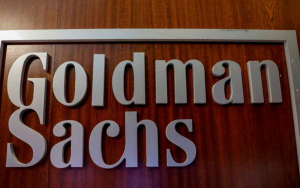A series of employment data releases in the United States has left investors in a state of confusion regarding the Federal Reserve’s future monetary policy. However, with next week’s release of the June Consumer Price Index (CPI) report, the stock market may gain more clarity on whether the Fed will need to resume its fight against inflation after pausing their aggressive interest rate hikes last month.
Possible Outcomes for the Stock Market
According to market analysts, the forthcoming June CPI report, scheduled for release at 8:30 a.m. ET on Wednesday, could either give a green light for the ongoing stock market rally or potentially bring an end to the current baby bull market due to intensifying macroeconomic headwinds. The overall impact on the market remains uncertain.
Inflation Expectations for June
Economists surveyed by Dow Jones predict that the June CPI reading from the Bureau of Labor Statistics will reflect a 3.1% increase compared to the previous year. While this represents a slowdown from the 4% year-over-year growth in the previous month, it still suggests a significant rise in consumer prices. The core price measure, which excludes volatile costs like food and fuel, is expected to rise by 5.0% from the same time last year, down slightly from May’s 5.3% increase.
According to Tony Roth, Chief Investment Officer at Wilmington Trust, his team anticipates continued disinflation in June, especially in the “super-core” inflation that excludes energy, food, and housing expenses. This subset of inflation tends to recede more slowly than the broader gauge, potentially indicating that the Fed’s objectives are nearly met.
“We expect to continue to see significant weakening across the board of inflation, and that should feed into this narrative that the Fed is going to be close to being done,” said Roth on Friday. “If it is the worst-case scenario – two more hikes – that will also feed into that narrative that two more hikes should be able to accomplish their objective.”
Stock Market Rally May Not Continue, Says Chief Strategist
Irene Tunkel, chief strategist of U.S. equity strategy at BCA Research, has expressed skepticism about the sustainability of the current stock market rally. According to Tunkel, the market’s “bullish sentiment” and “excessive cash balances” make it difficult for further upward surprises. She believes that if the level of positive surprises, particularly in Consumer Price Index (CPI) data, decreases, the market is likely to decline.
Tunkel highlighted some factors that could lead to disappointment in the stock market. These include overly bullish sentiment, stretched valuations for technology companies, and high economic expectations. Additionally, she emphasized the impact of restrictive monetary policy on market performance. Tunkel warned that it is premature to celebrate victory and that there is still uncertainty ahead.
The U.S. stock market experienced a shift in sentiment during the first half of 2023. Initially, there were concerns about a “hard landing.” However, after the Federal Reserve decided to keep benchmark interest rates unchanged at 5% to 5.25% in June, hopes of a “soft landing” emerged. Despite this, Fed Chair Jerome Powell cautioned that more interest-rate increases are expected this year to combat inflation. Some policymakers even anticipate two more quarter-point hikes in the second half of 2023.
More Insights: Analyzing the June Jobs Report’s Impact on Stock Market Investors and the Federal Reserve
Mixed Bag of Economic Data
Investors have been faced with an array of economic data this week, prompting careful consideration. U.S. stocks experienced significant losses on Thursday after reports showed that the private sector had generated close to half a million new jobs in June. This caused Treasury yields TMUBMUSD10Y to rise by 4.067%, fueling concerns about potential interest rate hikes from the Federal Reserve. With the labor market remaining tight, the central bank has yet to ease its monetary tightening.
A day later, a strong but slightly underwhelming June nonfarm payrolls report was released, taking some of the wind out of the sails of what had been an impressively resilient labor market. This has resulted in divided opinions among investors regarding whether these results are strong enough to compel policymakers to raise rates beyond expectations, potentially endangering the economy with a recession.
According to the CME FedWatch Tool, futures traders have priced in a probability of over 92% that the Fed will increase benchmark interest rates by 25 basis points, establishing a range of 5.25% to 5.5% later this month. Although expectations for a quarter percentage point hike in either September or November waned slightly on Friday, they still remained above 25%.
David Lefkowitz, head of equities Americas at UBS Global Wealth Management, noted that the “overall tone” of the jobs data reflects the continued resilience of the U.S. economy. Despite a higher-than-expected ADP report and a marginal miss in the government job report, Lefkowitz emphasizes that the larger picture indicates a U.S. economy that is more resilient than what the markets had anticipated just a few months ago.
The Labor Market and Interest Rates
The latest report on the labor market suggests a significant turning point, according to experts at Wilmington Trust. They argue that there is now no reason for the Federal Reserve to maintain high interest rates for an extended period. However, this perspective diverges from the Fed’s tightening path for the second half of the year, which primarily focuses on interest rate hikes.
Wilmington Trust’s Roth describes any further rate hikes as “insurance hikes” designed to combat inflation. The belief is that these additional measures are necessary for the Fed to fulfill its objectives.
It is vital, however, for investors to consider the broader economic context when interpreting these interest-rate movements, as highlighted by Lefkowitz. He emphasizes that the rate adjustments made thus far in 2023 are driven by a positive growth outlook rather than inflationary pressures. Moreover, the environment in 2023 is expected to foster improved corporate profit growth compared to the latter half of 2022. Lefkowitz adds that forward estimates for companies have seen a notable increase over the past three months.
Nevertheless, Tunkel from BCA Research acknowledges the complexity of the current economic situation. There exists a conundrum between economic growth and inflation. With the economy experiencing robust growth, inflation is unlikely to decline since the two variables move in tandem.
In conclusion, while the labor market report signals a significant shift, experts diverge in their views on the implications for interest rates. The Fed’s actions are seen as precautionary measures against inflation, but the broader economic context suggests a positive growth outlook for 2023. Nonetheless, the interplay between economic growth and inflation continues to present challenges.
U.S. Stocks Experience Weekly Decline
The Dow Jones Industrial Average (DJIA) records its largest weekly decline since March.
According to Dow Jones Market Data, U.S. stocks ended the week on a lower note. The Dow Jones Industrial Average (DJIA) experienced a significant drop, marking its largest weekly decline since March. Meanwhile, the S&P 500 (SPX) fell by 1.2%, and the Nasdaq Composite (COMP) declined by 0.9%. This downward trend reflects the current state of the stock market.


